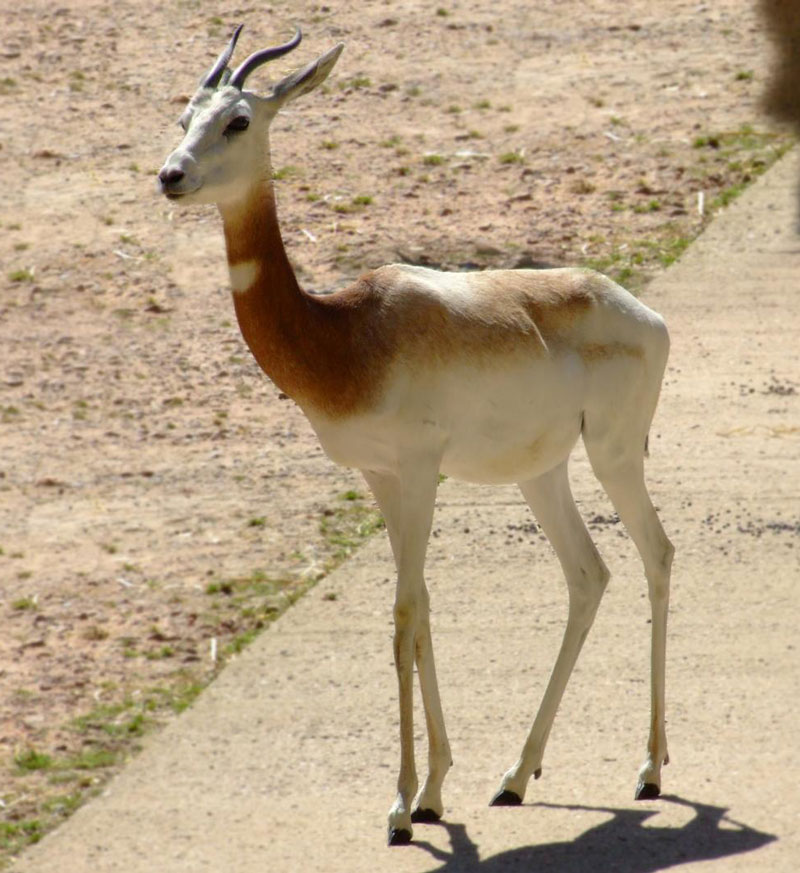Scientific Name
Gazella dama
Description
The dama gazelle is the largest gazelle. The head, hindquarters, and the underbelly of this gazelle are white. The neck and back are a uniform reddish to chestnut color though there is a large color variation within the species. Their horns can be 14 inches long, but the female has shorter horns than the male. Dama gazelles are diurnal and, though they can survive long periods of draught, need more water than other desert creatures.
Food
Dama gazelles are herbivores and eat acacia and bush leaves and grasses. To get the most out of the available food supply, they often stand on their hind legs to reach the upper leaves on the bushes.
Habitat
The dama gazelle is found in Saharan Africa and is a desert animal. They range from Northern Sahara to the Sahel depending on the season.

Predators
The primary predator of the dama gazelle and the reason for its decline is man. Poachers have taken a great toll on this gazelle. They are also preyed upon by the cheetah, cape hunting dog, lion, leopard, hyena, and python.
Social Structure
Dama gazelles can be found in herds of 15 to 20 animals. They are highly nomadic and move from the Northern Sahara region in the rainy season to the Sahel in the dry season. The dama gazelle often masses into temporary migratory herds of hundreds of animals. Due to a population decline, this is not seen as much anymore. Male dama gazelles become territorial during the mating season. The rest of the time they are fairly docile. Dama gazelles are very alert and, when they detect a predator, will warn the others by „pronking”. They jump in the air with all four legs stiff and leaving the ground at the same time.
Birth & Offspring
Dama gazelles give birth to one baby gazelle after a gestation period of 6.5 months. After a few days, the baby gazelle is strong enough to follow its mother and after a week can run as fast as the adults.

Lydia King is a huge animal lover and has always been fascinated with learning about the animal kingdom. She enjoys writing about anything animal related from scientific information about rare species to animal references in pop culture.












